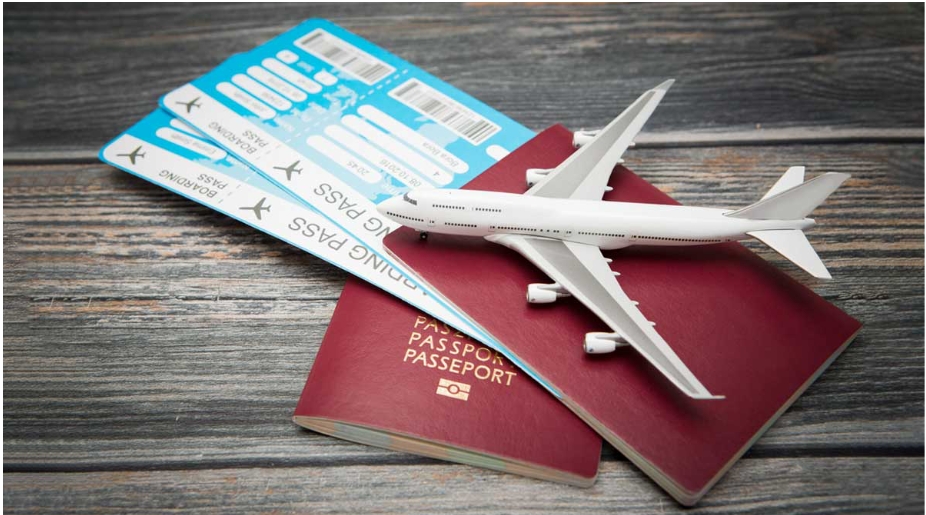The debate between ducted vs split system air conditioning often comes down to one crucial factor: running costs. When temperatures soar on the Sunshine Coast, choosing the right cooling system can significantly impact your energy bills.
Ducted air conditioning systems, whilst offering whole-home comfort, operate differently from their split system counterparts. Many Sunshine Coast homeowners find themselves weighing the benefits of ducted air conditioning installation against the simplicity of split systems. The choice between these options affects not just your initial investment, but also your long-term operating costs.
Let’s examine the real costs of running both systems, from daily energy consumption to maintenance requirements, helping you make an informed decision for your Sunshine Coast home.
Understanding AC Running Costs
Heating and cooling appliances consume approximately 40% of energy in Australian homes, making understanding running costs essential for both ducted and split system air conditioners.
Energy consumption basics
The energy efficiency of modern air conditioning systems ranges between 300% to 600%. This remarkable efficiency stems from their ability to transfer heat rather than generate it directly. Notably, ducted systems typically use more power than split systems due to their larger fans and energy loss through ductwork.
A medium-sized ducted system operating for 8 hours daily consumes between 20-30kWh of electricity. Furthermore, split systems demonstrate superior efficiency, particularly in smaller spaces. A 2.5kW split system costs approximately 22 cents per hour to operate, whilst a 9kW system runs at about AUD 9.63 for 8 hours at full capacity.
Factors affecting running costs
Several key elements influence the operating expenses of both ducted and split systems:
- Temperature Settings: Each degree of extra heating in winter or cooling in summer increases energy consumption by 5-10%
- Climate Zones: Running costs in cold zones (such as Melbourne) or hot zones (like Brisbane) tend to be higher than average zones (including Perth)
- System Maintenance: Poor maintenance can lead to blocked philtres and heat exchangers, resulting in increased operating current and higher running costs
- Insulation Quality: Inadequate insulation causes significant energy loss through the building fabric, leading to increased consumption
The efficiency of ducted systems primarily depends on proper zone control and ductwork condition. Poorly designed or installed ductwork can cause substantial energy losses, whilst well-sealed, insulated ducts ensure optimal efficiency. Meanwhile, split systems benefit from their ability to cool specific areas, making them more cost-effective for selective space conditioning.
Regular maintenance plays a vital role in controlling costs. Professional servicing includes philtre cleaning, coil maintenance, and thermostat calibration, all of which contribute to maintaining system efficiency. Additionally, smart controllers and zone control features in modern systems offer opportunities for substantial energy savings through precise temperature management.
Initial Setup and Installation Costs
Initial investment plays a crucial role in choosing between ducted and split system air conditioning. The upfront costs vary substantially between these systems, primarily influenced by installation complexity and system size.
Ducted system installation expenses
On the Sunshine Coast, ducted air conditioning installation ranges from AUD 9,173 to AUD 15,289 for a standard single-storey home. For larger two-storey properties, costs can exceed AUD 16,818. The price variation depends on several factors, including the system’s capacity and the number of zones required.
Small ducted units start from AUD 6,712 for a 6.0 kW system, whilst medium-sized units of 10 kW capacity begin at AUD 7,874. Essentially, the more extensive the system, the higher the installation cost, with large 14 kW units starting from AUD 9,678.
Split system setup costs
Split system installation proves more economical, with costs ranging between AUD 917 to AUD 1,223 for labour alone. The total expense, including both unit and installation, typically falls between AUD 1,070 to AUD 1,528. A smaller 2 kW system might cost as little as AUD 917, whereas a larger 9 kW model reaches approximately AUD 1,146.
Hidden costs to consider
Beyond basic installation, several additional expenses often surface:
- Electrical infrastructure upgrades, specifically safety switches and circuit modifications
- Drainage requirements and plumbing modifications
- Additional piping and cabling costs for complex installations
- Wall repairs or modifications, especially for split system mounting
Moreover, installation complexity can increase costs substantially. For double-storey homes, mounting units higher on brackets adds approximately AUD 382 to the total expense. Consequently, properties with difficult access or requiring extensive ductwork modifications face higher installation costs.
Specific factors affecting final pricing include home layout, existing infrastructure, and required system modifications. Generally, replacing an old system proves less expensive than a first-time installation, provided the new unit fits existing mounting positions.
Daily Operating Costs Comparison
Running costs between ducted and split system air conditioners show substantial variations across different seasons and usage patterns. Understanding these differences helps in making an informed choice for your Sunshine Coast home.
Peak summer usage costs
A standard 2.5kW split system consumes approximately 511kWh during cooling season, resulting in annual expenses of AUD 168.19. For larger spaces requiring a 5kW unit, usage increases to 819kWh, costing around AUD 275.22 annually. Subsequently, a 6kW system’s consumption rises to 1,284kWh, with yearly costs reaching AUD 428.12.
In contrast, ducted systems operate at higher consumption levels, primarily because they cool entire homes. A typical ducted system costs approximately AUD 2.29 per hour to cool your home in summer. Nevertheless, actual expenses fluctuate based on various factors, including home size and insulation quality.
Winter heating expenses
Winter operation costs tend to be lower than summer cooling expenses, with ducted systems averaging AUD 1.83 per hour for heating. Although both systems provide efficient heating, their performance varies based on local climate conditions and usage patterns.
Split systems demonstrate remarkable efficiency in winter, operating at up to 600% efficiency. This means they can deliver five to six units of heat for every unit of electricity consumed, making them cost-effective for targeted room heating.
Energy efficiency ratings impact
The energy star rating system indeed plays a crucial role in determining running costs. Each additional star rating reduces operating expenses by approximately 15%. Furthermore, setting temperatures just one degree lower in summer increases energy consumption by 10%.
Key factors affecting daily operating costs include:
- Zone control capabilities
- Insulation effectiveness
- Temperature settings
- Regular maintenance schedule
- System size and capacity
Recent data indicates that Australians are expected to spend an additional AUD 466.34 per household on air conditioning compared to the previous year. In fact, heating and cooling now account for up to 40% of household energy consumption.
For optimal cost efficiency, maintaining temperatures between 24°C and 25°C during summer proves most economical. Although ducted systems typically consume more power overall, their zone control features can substantially reduce operating costs by allowing selective area cooling or heating.
Maintenance and Long-term Expenses
Proper maintenance stands as a crucial factor in determining the long-term value of air conditioning systems. Both ducted and split systems require specific upkeep routines to maintain their efficiency and longevity.
Regular service requirements
Professional servicing for ducted systems should occur every 1-2 years. Split systems, whilst requiring more frequent attention, present simpler maintenance tasks. Key maintenance requirements include:
- Monthly philtre cleaning for daily-use systems
- Quarterly philtre cleaning for occasional use
- Annual professional inspection of components
- Regular outdoor unit cleaning
- Periodic duct inspection (for ducted systems)
Proper maintenance directly impacts energy consumption and system performance. Regular cleaning can reduce energy bills by up to 10%, whilst neglected systems face decreased efficiency and higher operating costs.
Repair cost differences
Split system repairs typically cost less, primarily because replacement parts are more affordable. However, ducted systems, whilst requiring repairs less frequently, involve higher costs when issues arise. This difference stems from the complexity of ducted systems, particularly their extensive ductwork and centralised components.
A significant factor in repair expenses involves system accessibility. Ducted systems, often concealed within ceiling spaces, require more labour-intensive repair processes. Conversely, split systems offer easier access for repairs, reducing labour costs and repair time.
System lifespan comparison
Ducted air conditioning systems demonstrate remarkable longevity, typically lasting between 10-20 years with proper maintenance. Split systems, alternatively, generally operate effectively for 5-10 years before requiring significant repairs or replacement.
The lifespan of ducted systems benefits from their robust design and centralised operation. However, this advantage depends heavily on regular professional maintenance and proper zone control usage. Split systems, whilst having shorter lifespans, offer the advantage of independent unit operation – meaning a single unit failure doesn’t affect the entire system.
Accordingly, the choice between ducted and split systems involves balancing initial costs against long-term maintenance expenses. Whilst ducted systems demand higher maintenance investments, their extended lifespan often justifies the cost for larger homes. Split systems, despite requiring more frequent maintenance, present lower repair costs and simpler maintenance routines, making them particularly suitable for smaller spaces or targeted cooling needs.
Cost-Saving Features and Technologies
Modern technology offers substantial opportunities for reducing air conditioning costs on the Sunshine Coast. Both ducted and split systems now incorporate advanced features that enhance efficiency and lower operating expenses.
Zone control benefits
Zone control technology primarily benefits ducted systems by dividing homes into separate climate areas. This feature allows homeowners to cool or heat only the spaces they use regularly, reducing the load on air conditioners. Whilst initial setup requires professional expertise, zone control systems can decrease energy consumption substantially.
The advantages extend beyond mere convenience. By focusing conditioned air on particular zones, the system experiences less wear and tear. This targeted approach leads to significant energy savings, as unused rooms can remain unconditioned. For instance, families with empty bedrooms or rarely used spaces can exclude these areas from their cooling regime, cutting unnecessary expenses from their energy bills.
Smart controller advantages
Smart AC controllers presently offer remarkable cost-saving potential, with studies showing reductions of up to 25% on energy costs annually. These devices transform standard air conditioners into intelligent climate control systems through several key features:
- Geofencing capabilities that automatically adjust settings based on occupancy
- Seven-day scheduling for personalised comfort
- Real-time energy consumption monitoring
- Philtre maintenance tracking and alerts
- Integration with voice control systems
The implementation of smart controllers brings additional benefits. Users can monitor their daily, weekly, and monthly usage patterns through mobile apps. This visibility helps identify opportunities for further cost reductions. Furthermore, these controllers can detect when philtres need cleaning, maintaining system efficiency and preventing unnecessary energy waste.
Solar integration possibilities
Solar integration with air conditioning systems presents a compelling opportunity for long-term cost reduction. Studies indicate that solar-powered air conditioning can decrease energy costs by 30% in the first year alone. The benefits extend beyond immediate savings, as businesses and homeowners using solar energy see substantial returns on investment over time.
Solar-integrated HVAC systems function most effectively during peak sun hours, precisely when cooling demands typically reach their highest. This synchronisation makes solar power particularly suitable for the Sunshine Coast climate. Furthermore, the Australian government offers various incentives for solar integration, including tax credits that can apply to the entire installation cost.
The combination of solar power with smart controllers creates an even more efficient system. These integrated solutions enable precise temperature management whilst simultaneously reducing grid electricity consumption. Presently, solar water heating systems can supplement traditional heating methods, further decreasing reliance on conventional energy sources.
Conclusion
When it comes to ducted air conditioning on the Sunshine Coast, Crown Power stands head and shoulders above the rest. With years of experience under our belt, we’ve established ourselves as the region’s leading experts in supply and installation.
Our commitment to exceptional customer service and expert installations ensures that every client receives a tailored solution that perfectly suits their needs. We pride ourselves on offering competitive pricing without compromising on quality, making comfort accessible to homeowners and businesses alike.
What truly sets Crown Power apart is our dedication to energy efficiency and ongoing support. Our systems boast impressive energy ratings, helping you save on running costs while reducing your environmental impact. And with our comprehensive after-sales support, you can rest easy knowing we’re always here to help.
Don’t settle for anything less than the best for your ducted air conditioning needs. Contact Crown Power today to experience the difference that true expertise and customer-focused service can make. Let us help you create the perfect climate for your home or business — because when it comes to comfort, you deserve the crown jewel of air conditioning solutions.






